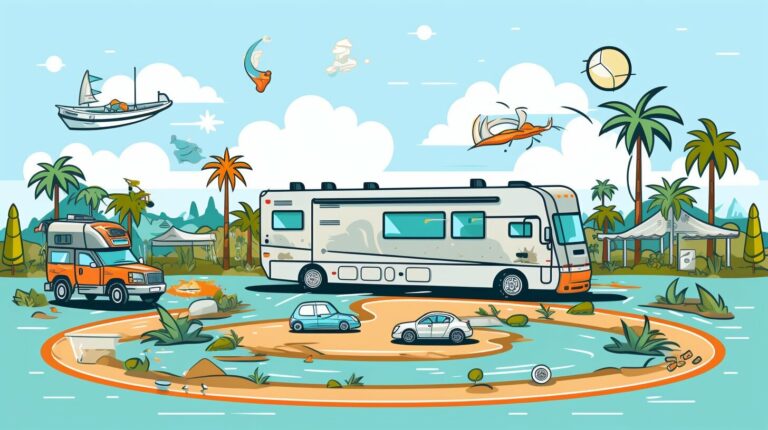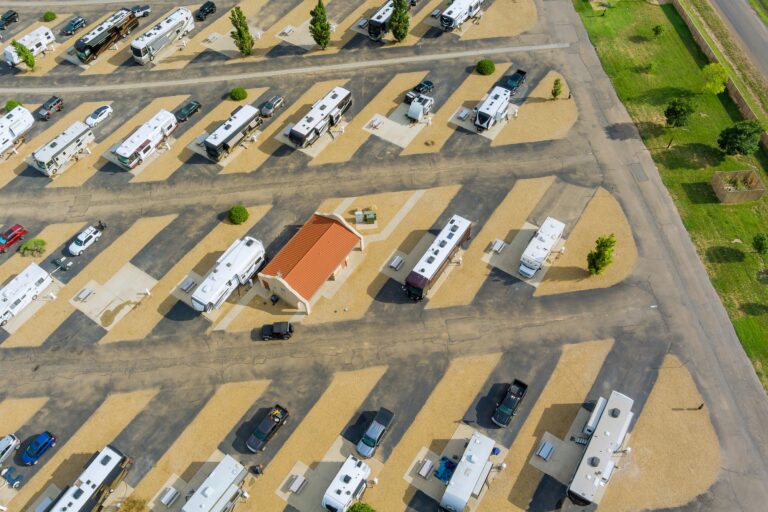An RV awning is a valuable feature that provides shade, protection from the elements, and an extended living space for relaxation and outdoor activities. To make the most of your RV awning and ensure its longevity, it’s essential to practice proper care and maintenance. In this guide, we’ll cover everything beginners need to know about RV awning care, including cleaning, maintenance, and troubleshooting tips.
Table of Contents
- Types of RV Awnings
- Essential Awning Care Tips
- Cleaning Your RV Awning
- Awning Maintenance and Inspection
- Troubleshooting Common Awning Issues
- RV Awning Accessories and Upgrades
1. Types of RV Awnings
Before diving into awning care and maintenance, it’s important to understand the types of RV awnings available:
- Manual awnings: These awnings require manual setup and takedown, usually by extending the awning arms and securing them in place with locking mechanisms or tension knobs.
- Automatic or electric awnings: These awnings can be extended and retracted with the push of a button or remote control, often featuring sensors that automatically retract the awning in high winds or adverse weather conditions.
- Slide-out awnings: These smaller awnings are designed to cover RV slide-outs, protecting the slide-out roof and seals from debris and water damage.
2. Essential Awning Care Tips
Here are some general tips for taking care of your RV awning:
- Avoid leaving the awning extended during high winds or heavy rain: Strong winds and heavy rain can cause damage to your awning fabric and support arms. Retract your awning during adverse weather conditions to prevent damage.
- Don’t store your awning wet: Always allow your awning to dry completely before retracting and storing it to prevent mold and mildew growth.
- Use awning stabilizers: Anchoring your awning with stabilizer straps or weights can help prevent damage from wind gusts and keep the awning fabric taut.
- Avoid sharp objects: Keep the area around your awning clear of branches, sharp objects, or other hazards that could puncture or tear the awning fabric.
- Regularly inspect and maintain your awning: Periodically inspect your awning for signs of wear or damage and perform regular maintenance to ensure its longevity.
3. Cleaning Your RV Awning
Proper cleaning of your RV awning is essential for maintaining its appearance and durability. Follow these steps to clean your awning:
- Extend the awning: Fully extend your awning to access the fabric and support arms.
- Brush off debris: Use a soft-bristle brush or broom to remove any loose dirt or debris from the awning fabric.
- Mix a cleaning solution: Combine a mild detergent (such as dish soap) with warm water in a bucket. Avoid using harsh or abrasive cleaners that could damage the awning fabric.
- Scrub the awning: Using a soft-bristle brush or sponge, gently scrub the awning fabric with the cleaning solution, working in sections from top to bottom.
- Rinse the awning: Thoroughly rinse the awning fabric with clean water, either using a hose or a bucket of clean water and a sponge.
- Allow the awning to dry: Before retracting your awning, allow it to dry completely in the open position to prevent mold and mildew growth. This process may take several hours, depending on the weather conditions.
4. Awning Maintenance and Inspection
Regular maintenance and inspection of your RV awning can help identify and address issues before they become major problems. Here’s what to look for:
- Inspect the awning fabric: Check for signs of wear, such as fraying, tears, or fading. Small tears can often be repaired with awning repair tape, while larger issues may require professional repair or replacement.
- Check the support arms and hardware: Inspect the awning support arms, brackets, and mounting hardware for signs of rust, corrosion, or damage. Tighten any loose bolts or screws, and lubricate the moving parts with a dry silicone spray or RV awning lubricant.
- Test the awning operation: If you have a manual awning, ensure the locking mechanisms and tension knobs are functioning correctly. For electric awnings, test the motor, control switch, and sensors to ensure proper operation.
5. Troubleshooting Common Awning Issues
Here are some common awning issues and their potential solutions:
- Awning won’t extend or retract: For manual awnings, check for obstructions or damage to the support arms and locking mechanisms. For electric awnings, check the power source, fuse, or circuit breaker, and ensure the motor and control switch are functioning properly.
- Awning fabric is sagging: Adjust the support armsto create the proper tension and ensure the fabric remains taut. If the awning fabric continues to sag, it may be stretched out and require replacement.
- Water pooling on the awning: Adjust the awning pitch to allow for proper water runoff. If water continues to pool, consider using an awning support or de-flapper to help prevent sagging.
- Awning fabric tearing or fraying: Repair small tears with awning repair tape and trim any frayed edges. For larger tears or extensive fraying, consult a professional for repair or replacement options.
6. RV Awning Accessories and Upgrades
Enhance your RV awning experience and prolong its lifespan with these useful accessories and upgrades:
- Awning lights: Add ambiance and improve visibility around your awning area with LED lights designed for RV awnings.
- Awning screen or shade panels: Attach shade panels or screens to the sides of your awning to provide additional privacy, sun protection, and insect control.
- Awning mats: Place an RV awning mat or outdoor rug beneath your awning to create a comfortable, clean outdoor living space.
- Awning tie-downs and stabilizers: Secure your awning with tie-down straps, anchors, or weights to minimize wind-related damage and keep the awning fabric taut.
- Awning de-flappers: These devices attach to the awning fabric and support arms to help prevent flapping and sagging caused by wind or water pooling.
By following this guide, you’ll be well-prepared to care for and maintain your RV awning, ensuring it remains functional and attractive for years to come. Regular cleaning, inspection, and maintenance will not only extend the life of your awning but also enhance your overall RV experience.






